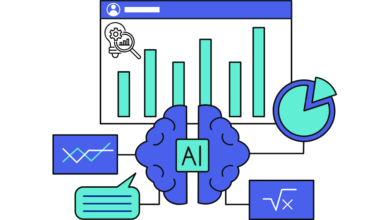
The pandemic has seen organisations embracing intelligent automation at a rapid pace. They have had to find new ways to stay competitive, and deliver value to customers – often adapting their businesses to truly focus on a ‘customer first’ strategy, beyond simply offering good customer service.
Some businesses, of course, were on a path of AI adoption and digital transformation before the pandemic hit, and so had a clear advantage. They had processes and systems in place that were flexible enough for them to scale up and down with fluctuating demand. Others were restricted by legacy IT systems and cultural hesitancy to change. The latter are now looking for ways to make their existing systems more agile and adaptable, and intelligent automation can help here, too.
And then, in the UK, there’s Brexit – causing disruption for many organisations who import or export goods, who are looking for ways to deal with the additional processes associated with Brexit, and reduce costs to cope with them. Again, intelligent automation can help here.
Our own research has found that there are four key trends in the adoption of automation and AI.
Trend 1: organisations are investing in technologies that can be easily implemented with existing technology infrastructure
This means focusing on low code or no code development, and solutions they can integrate into bigger technology stacks, including pre-packaged business processes that don’t depend on high levels of customisation.
That means we’ve seen an increase in businesses using vendor solutions that let different systems communicate with each other – in other words, bots talking to bots.
Trend 2: automation is moving from the back office to the front office
Before the pandemic, most automation projects focused on back office functions such as IT infrastructure operations, or finance and accounting.
Now, though, we’re seeing more businesses use automation to support front-office roles – such as customer service, marketing and supply chain automation – as automation and AI becomes a more strategic play. Businesses are under pressure to do more with less, and so with a renewed focus on efficiency and productivity, automation is critical.
The single biggest area we’re seeing of automation and AI investment is in customer-focused areas of the business. If you can improve customer service and sales, but not increase headcount to do it, that sets you for the growth that so many businesses desperately need as we come out of the pandemic.
Trend 3: conversational AI helps companies deal with supply chain issues (including those that are Brexit-related)
Many companies in the UK are feeling the impact of Brexit, on top of the pandemic. The UK has always relied on skilled workers from the EU (particularly in STEM fields) and many organisations are starting to feel the effects of the skills shortage.
What’s more, Brexit brings additional headaches for the supply chain, with increased tariffs and border checks, as well as the legal complications faced by EU citizens who live in the UK.
To combat these issues, businesses are looking at how they can use artificial intelligence (including conversational AI) to help alleviate these problems. They’re also using process mining technologies to identify areas of their businesses that would benefit from automation. We’re starting to see a flurry of tech start-up activity to meet these demands.
Trend 4: organisations are focusing on increasing productivity, not reducing headcount
Despite the headlines, most businesses are not looking to reduce headcount, but increase productivity, thereby increasing profit. It is true, of course, that if revenues are declining, automation can help a company achieve more without adding staff – but our research has found that most businesses are looking for ways to boost profits by increasing their productivity, rather than opting to cut costs by reducing headcount. No-one ever cut their way to greatness.
While some roles may change in the long-run, headcount will largely remain stable. It’s an approach that will allow organisations the flexibility (and responsiveness to changing demands) to scale-up, without increasing costs.
In summary, businesses are looking to do more, with less. Efficiencies can be found throughout the organisation, and organisations want to find ways to scale, without adding cost. The answer is to augment human ability with automation and AI, not to replace it.
So if you’re an organisation considering how you can increase efficiency and scale as we recover post-pandemic, automation and AI could be your answer.



